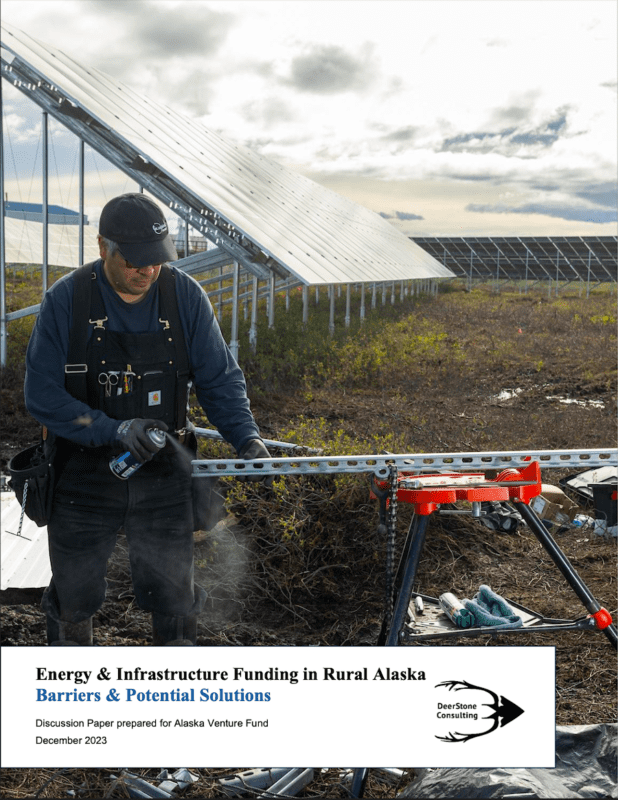Prepared by DeerStone Consulting for Alaska Venture Fund, December 2023
Context and Purpose
A myriad of unique challenges stand in the way of Alaska’s rural, remote, and tribal communities’ access to federal funding. As a result, the communities most in need are often those least able to obtain funding. Alaska Venture Fund (AVF) contracted with DeerStone Consulting to:
- Identify barriers to tribal energy and other infrastructure funding opportunities in Alaska.
- Develop actionable potential solutions for reducing identified barriers.
Based on stakeholder interviews, this paper is intended to serve as a catalyst for meaningful conversations with the ultimate aim of guiding changes at the policy and agency levels. This paper emphasizes the need for an equitable approach to grant funding to advance the goals of rural Alaska communities and better meet federal program and policy goals.
Key Findings
Overall, interviewees described a situation in which the communities most likely to need funding support for infrastructure projects are the least likely to have funds to provide the required cost share, the specialized expertise needed to prepare complex applications, the resources to hire outside help for grant writing or technical studies required for some grant applications. The upshot is that implementation often undermines the goal of equity in access to infrastructure funding.
Unique challenges in Alaska include:
- Scale: Alaska’s vast size and sparse population leave few opportunities for economies of scale or aggregation of goods and labor.
- Access and logistics: A limited road system means many rural communities are accessible only by air and water; transportation costs, timing uncertainty, and severe weather compound the difficulty of moving goods and completing projects in rural Alaska.
- Climate change: Permafrost degradation, diminished river flows, intensified wildfires and other impacts exacerbate challenges and increase uncertainty.
- Land ownership: Alaska’s unique and complicated land ownership structures make site control and property ownership difficult to secure and demonstrate.
- Limited eligibility definitions: Tribal and Alaska Native Corporation structures can face barriers meeting inflexible eligibility standards.
- Labor: Limited labor, high costs, and union requirements can become major barriers in remote Alaska communities.
- Connectivity: broadband and wifi are severely limited across much of rural Alaska.
Potential Solutions
Interviewees shared a wealth of creative solutions and examples of success. Examples include:
- Removing match requirements, offering advance decisions on match waiver requests, and/or accepting commitments of in-kind or maintenance funds as match.
- Reducing the use of reimbursement-based grants to enable cash-strapped communities that win grants to proceed.
- Reducing applicant burden along the lines of the USDA’s High Energy Cost Grant process, which includes flexible criteria to better meet the diverse needs of the communities it serves.
- Treating regional tribal organizations and consortia as eligible applicants to enable these entities to receive and manage grants for Native villages to coordinate major initiatives (such as energy system upgrades) at a regional level.
- Using a multi-agency shared application to allow for integrated funding between programs, more efficient use of federal funds to tackle crucial projects, and lower administrative burden for all parties.
- Expanding application platforms to include email, fax, and mail in addition to online portals that require reliable internet access.
- Reducing barriers created by Buy America requirements by shifting the burden from applicants to vendors to get certification, creating a federal database of approved vendors, developing a pre-approved list of exemptions based on lack of practical availability, and/or raising the threshold for Buy America requirements to a level commensurate with the goal of national impact.
- Incorporating cost of living adjustments in application processes and reconsidering the way costs and benefits are calculated in remote communities with high costs and limited cash economies.
The paper identifies and describes other challenges as well as workable solutions to better meet federal policy objectives and advance the goals of Alaska’s rural and Tribal communities.
